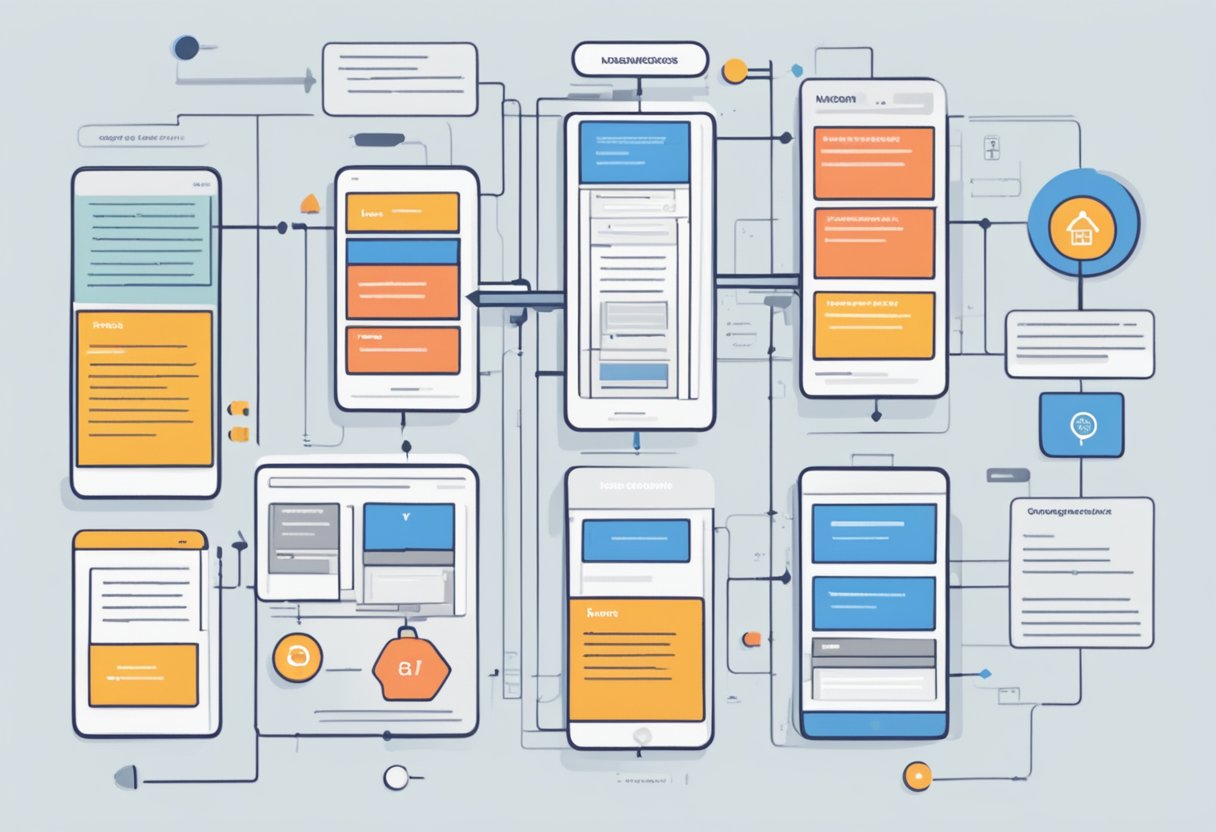Mobile user experience (UX) design is critical to the success of any mobile application. However, mobile UX design comes with its own set of challenges that designers must overcome to create a seamless and intuitive experience for users.
These challenges often relate to the limited screen size of mobile devices, the need for quick navigation, and the need to ensure that the application is accessible to all users. In this article, we will explore some of the common mobile UX challenges and how designers can overcome them.
Understanding UX challenges is the first step to overcoming them. Some of the most common mobile UX challenges include designing for different screen sizes, ensuring that the application is accessible to all users, and providing a seamless and intuitive experience.
Designers must be aware of these challenges and work to address them in their design process.
A strategic UX design process can help designers overcome these challenges. This process involves understanding the user’s needs and designing the application to meet those needs.
It also involves testing and iterating the design to ensure that it is effective and meets the user’s expectations. By following a strategic UX design process, designers can create mobile applications that are intuitive, accessible, and effective.
Key Takeaways
- Understanding UX challenges is the first step to overcoming them.
- A strategic UX design process can help designers overcome common mobile UX challenges.
- Collaboration and communication between designers, developers, and stakeholders are essential to creating an effective mobile UX design.
Understanding UX Challenges

Mobile applications have become an integral part of our daily lives. However, designing a mobile application that is user-friendly and meets the needs of its users can be challenging. In this section, we will discuss some of the common challenges that designers face when designing mobile applications and how to overcome them.
Recognizing Common Obstacles
One of the most common challenges that designers face is ensuring that the application is usable. Usability is a critical aspect of mobile application design as it determines how easy it is for users to interact with the application. Poor usability can lead to frustration, and users may abandon the application altogether.
Another challenge that designers face is gathering feedback from users. Feedback is essential as it helps designers understand what users like and dislike about the application. Gathering feedback can be challenging, especially if users are not willing to provide it.
Designers also face challenges when it comes to stakeholders. Stakeholders may have different opinions and preferences, making it difficult to design an application that meets everyone’s needs. Designers must find a balance between stakeholders’ needs and what is best for the users.
The Impact of Poor UX on Business Goals
Poor UX can have a significant impact on business goals. If users find the application difficult to use, they may abandon it, leading to a decrease in revenue. Poor UX can also lead to negative reviews, which can harm the application’s reputation.
On the other hand, good UX can lead to increased user engagement, which can lead to higher revenue and positive reviews. Good UX can also lead to increased user loyalty, which can lead to repeat business and word-of-mouth referrals.
Strategic UX Design Process

A strategic UX design process is essential in overcoming common mobile UX challenges. By incorporating user research, iterative design and prototyping, and leveraging design thinking, designers can create effective and user-friendly mobile apps.
Incorporating User Research
User research is a crucial step in the design process. It helps designers understand the user’s needs, preferences, and behaviors.
By conducting user research, designers can create a user-centered design that meets the user’s needs. User research can be done through surveys, interviews, and usability testing.
Iterative Design and Prototyping
Iterative design and prototyping involve creating wireframes, mockups, and prototypes to test the design. By testing the design, designers can identify design flaws and make improvements.
Iterative design and prototyping also allow designers to test the design with users and get feedback on the design.
Leveraging Design Thinking
Design thinking is a problem-solving approach that involves empathy, creativity, and rationality. It helps designers understand the user’s needs and create a user-centered design.
Design thinking involves five stages: empathize, define, ideate, prototype, and test. By following these stages, designers can create effective and user-friendly mobile apps.
Tools and Technologies in UX
Utilizing AI and Data
AI and data analysis have become essential tools in the field of UX design. By using AI algorithms and data analytics software, UX designers can gain valuable insights into user behavior and preferences.
This data can then be used to create more personalized and effective user experiences. For example, AI-powered chatbots can provide users with instant support and assistance, while data analysis tools can help designers identify areas of improvement and optimize their designs accordingly.
Adapting to Design Trends
Design trends are constantly evolving, and it’s essential for UX designers to stay up-to-date with the latest developments.
Sketch and Figma are popular design tools that allow designers to create and prototype their designs quickly and efficiently. These tools also provide access to a wide range of design resources and templates, making it easier for designers to stay on top of the latest design trends.
Choosing the Right Tools
When it comes to UX design, choosing the right tools is crucial. There are a wide range of tools and technologies available, each with its own strengths and weaknesses.
Some popular tools include Adobe XD, InVision, and Axure. UX designers should carefully evaluate their needs and choose the tools that best meet their requirements. It’s also important to consider factors such as ease of use, compatibility, and pricing when selecting a design tool.
Collaboration and Communication
Collaboration and communication are critical for successful mobile UX design. In today’s fast-paced, cross-functional teams, it’s crucial to work together efficiently and effectively. Here are some tips for overcoming common challenges in collaboration and communication.
Working with Cross-Functional Teams
Cross-functional teams are becoming more common in mobile UX design. These teams include developers, product managers, UX writers, and information architects.
To work effectively with cross-functional teams, it’s essential to establish clear roles and responsibilities. Each team member should have a clear understanding of their role in the project.
It’s also important to foster open communication and collaboration. Using collaborative tools and platforms, such as Slack or Trello, can help facilitate communication and keep everyone on the same page. Regular check-ins and status updates can also help ensure that everyone is working towards the same goals.
Effective Stakeholder Engagement
Stakeholder engagement is another critical aspect of mobile UX design. Engaging stakeholders early in the process can help ensure that their needs and requirements are met.
It’s important to establish clear communication channels with stakeholders and keep them informed throughout the design process.
One effective way to engage stakeholders is to involve them in user research. This can help ensure that the design meets the needs of the target audience.
It’s also important to listen to stakeholder feedback and incorporate it into the design where appropriate.
UX Writers and Information Architects
UX writers and information architects play a critical role in mobile UX design. They are responsible for creating clear, concise, and effective content that guides users through the app or website.
To work effectively with UX writers and information architects, it’s important to establish clear communication channels and provide them with the necessary information and resources.
One effective way to ensure that UX writers and information architects have the information they need is to create a content strategy. This strategy should outline the tone of voice, messaging, and content requirements for the project.
It’s also important to involve UX writers and information architects early in the design process to ensure that their needs are met.
Enhancing Accessibility and Inclusivity

Meeting Accessibility Standards
In today’s world, it is essential to design mobile applications that are accessible to everyone, including those with disabilities. Meeting accessibility standards is not only a legal requirement but also a moral obligation.
The Web Content Accessibility Guidelines (WCAG) 2.1 is the latest version of the guidelines that provides a foundation for designing accessible web content. The guidelines are organized under four principles: perceivable, operable, understandable, and robust.
To meet accessibility standards, it is important to ensure screen-reader compatibility, provide clear and consistent navigation, ensure readability and content accessibility, design with color contrast in mind, implement keyboard accessibility, and optimize for assistive technologies.
Compliance with WCAG conformance levels (A, AA, and AAA) is also necessary to ensure that the application is accessible to everyone.
Designing for a Diverse User Base
Designing for a diverse user base is an important aspect of creating inclusive mobile applications.
It is essential to consider the needs of users with different abilities, cultures, languages, and backgrounds.
Usability testing with real users is a great way to identify and address any issues that may arise.
To design for a diverse user base, it is important to use clear and simple language in UI copy.
Also, ensure that animations are non-disruptive, create transcripts and captions for multimedia content, and always include ALT text for images.
Inclusive design principles also involve designing for people with temporary disabilities, such as a broken arm or a temporary visual impairment.



